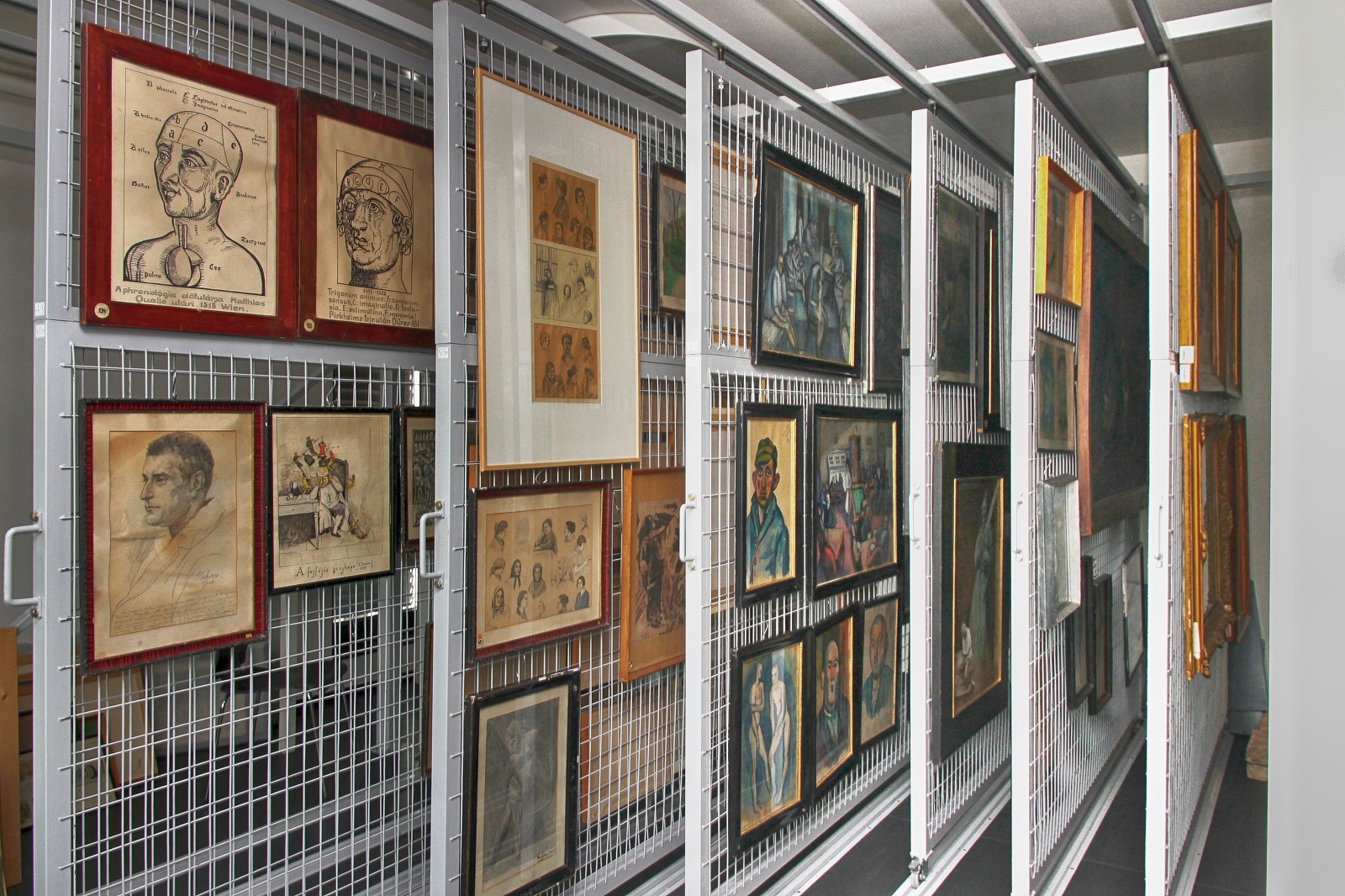In 2017 the Psychiatric Art Collection of HAS moved to its present location at the Research Centre for the Humanities, embraced by the Institute for Art History. The collection presents a 120-year history of the creative work of psychiatric patients living in public asylums. As a treasury for asylum art, the collection is open to both personal and collaborative academic work, and to the general public as well.

The collection, also referred to as the Selig Museum after its founder Árpád Selig, was opened to the public in 1931 at the Budapest-Angyalföld Mental- and Nervous Institute (Angyalföld Public Asylum earlier) and was moved to Lipótmező, the biggest public asylum of Hungary, in 1937. The collection fell into oblivion with the ravages of the war, and was 'unpacked' and installed again in the mid-1950s by János Fekete, a psychiatrist working in the Lipótmező asylum. A radical change in the history of the collection was brought about by the administration of András Veér (director psychiatrist of Lipótmező from 1986), who invited an art historian to organise the collection. Edit Plesznivy's curatorial and museological work opened up a gateway between the institutions of arts and the hidden world of psychiatric art, still existed within the walls of OPNI (National Institute of Psychiatry and Neurology, still named Lipótmező). The collection was declared part of the national heritage in1990, and in 2002 under the name of the Museum Collection of the Art Works of Psychiatric Patients was included in the Register of the Hungarian Museum Institutions. After the close of the OPNI, the collection was received and taken into care by the Hungarian Academy of Sciences, and in 2009 it was transferred to its then new location: Teréz krt. 13., Budapest.
Chief curator: Monika Perenyei
Collection staff: Katalin Aknai, Dóra Romhányi
Visits by prior arrangement:
http://www.psyartcoll.mta.hu/hu/kapcsolat



